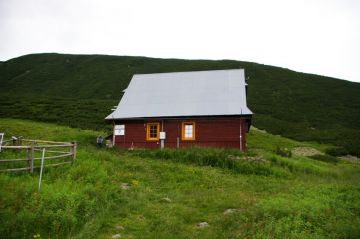Department of Geoenvironmental Research
FIELD STATIONS - HALA GĄSIENICOWA
History
In the Hala Gąsienicowa in the Tatra Mountains, the environmental stationary research started as of 1st December 1913, when the first meteorological measurements were conducted by the station that was established due to sustained efforts of the Environmental Section of the Polish Tatra Society. The station had been operating till 1917. The measurements had been continued in the years 1926-1939 on the basis of the then existing there a military meteorological station. During the World War 2 the station ceased its operations, except for precipitation measurements.
In December 1948, the Polish Geographical Society (PTG) organized there Scientific Station, located above a nearby mountain refuge in the herdsman’s hut that was converted into station’s building. At the beginning the station carried out essentially climatic and nival measurements, under the guidance of W. Milaty. In view of meteorological measurements carried out, the station was included into the PIHM network (currently IMGW – Institute of Meteorology and Water Management). In place of the PTG Station, in 1953 the Scientific Station of the Institute of Geography and Spatial Organization Polish Academy of Sciences was formed, which has been operating up till now. In parallel, in the same building there is also the meteorological station of the IMGW.
Since 1952, until his retirement (the late 1980s), the Station was headed by Dr. Mieczysław Kłapa. Field of research was extended with geomorphological studies, after taking the scientific care over the Station by prof. Mieczysław Klimaszewski in 1955. Since that time, the Station was part of the Cracow Department of Geomorphology and Hydrology of Mountains and Uplands (now the Department of Geoenvironmental Research). Since 1976,

